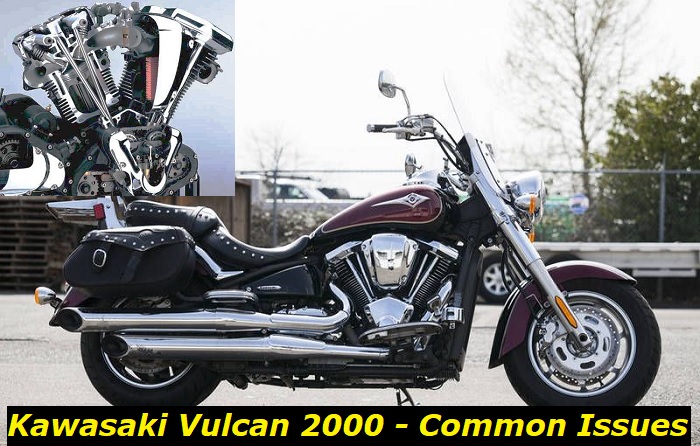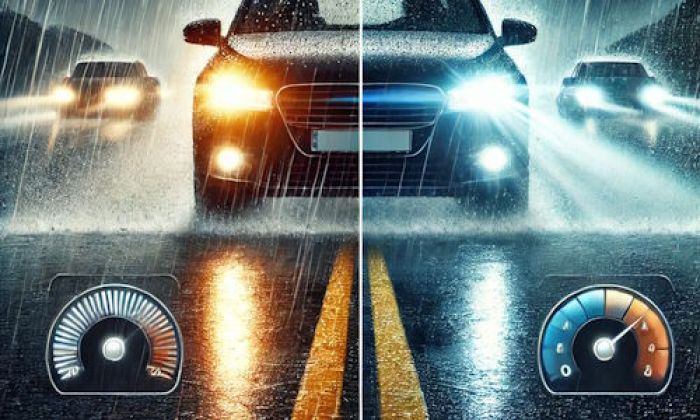Do you own a Kawasaki Vulcan 2000, or are you are thinking about getting one? You should read the following article if you answered "yes" to any of those questions. This article will provide helpful information on the issues that may arise with the Kawasaki Vulcan 2000 and the potential remedies.
The Kawasaki Vulcan 2000 is a wonderful machine with plenty to offer its riders since it is of the highest quality construction, very well-designed, and one of the most dependable motorbikes on the market. The most significant part is that it is not extremely expensive.
Nevertheless, several possible problems might occur during operation, such as the engine overheating or the ignition not working properly. We are able to provide you with the knowledge you want if you find yourself confronting any of these difficulties.

In this article, we will address the typical problems connected with the Kawasaki Vulcan 2000 and the solutions. We have investigated the specific issues linked with the Kawasaki Vulcan 2000, and we will have all your questions answered in this article, so without further ado. Let's get started!
What actually is the Kawaski Vulcan 2000?
The Kawasaki Vulcan 2000 is a great motorcycle and is widely considered the greatest cruiser that Japanese manufacturers have ever developed. It is said to generate 103 horsepower and 177 Nm of torque and has a peak speed of around 125 miles per hour.
The engine is a large fuel-injected, SOHC, V-twin with a size of 2,053cc; in fact, the enormous pistons utilized were one of the biggest ever used in a motorcycle. The engine also has a single overhead camshaft.
In addition, the Kawasaki Vulcan 2000 series was the top of the range, and each model featured its unique style and superb overall performance. It was the largest engine to date in a cruiser with a name that had been cherished since the late 1980s, so when the Kawasaki Vulcan 2000 was finally made available to the public and the press, they welcomed it with open arms.
After their test ride, they had one issue: the vehicle did not have a reverse gear, which would unquestionably make it much simpler to maneuver.
Common Kawaski Vulcan 2000 problems and solutions
In this section, we will address the issues that users of the Kawasaki Vulcan 2000 most often experience, as well as a remedy to those concerns.
- Engine overheats
One of the most significant issues with the Kawasaki Vulcan 2000 is engine overheating, which occurs anytime air flow reduces and fuel consumption rises. This happens for several reasons, such as a malfunctioning thermostat, an inappropriately adjusted idle speed, or insufficient cooling system maintenance. If any of these situations continue for an extended period, they may harm the engine's internal and surrounding rubber components.
Diagnosis
Please take note of the signs of engine overheating as soon as you see them. Since this is the quickest method to determine whether or not the engine is overheating, you should begin by ensuring that the temperature gauge is functioning correctly.
Whether the thermometer is working properly, the only remaining alternative is to examine the engine's intake manifold to discover if it is dusty or blocked.
Solution
Before inspecting the radiator fan, you may need to remove debris from the intake manifold. When doing so, the battery must be disconnected to prevent harming the starting motor.
After disconnecting the battery, turn off the ignition and wait about 30 seconds for the engine to cease running. If the engine continues to run after restarting, the intake manifold is likely obstructed and should be replaced.
- Engine stalls
The amount of air and fuel that enters the combustion chambers of the Kawasaki Vulcan 2000 engine is connected to engine stalling. If less air and fuel enter the combustion chamber than is generated by the combustion process, the machine cannot operate.
When there is insufficient air intake, the combination of air and gasoline reaches the combustion chambers, but there is inadequate oxygen to burn the gas correctly; consequently, the engine stops.
Solution
Check the valves. Pull down the valve cover's handle to examine them. If the handle doesn't move, the valve may be jammed. First, pull down the handle to verify whether the valve is secured. Listen for a grinding sound as you throttle.
Replace the valve if the noise persists after pushing the throttle. If there's no noise, clean the valve seat. Remove the valve stem cover and blow off carbon buildup. Reassemble the valve and spark plugs, then start the motor.
- Ignition switch failure
A faulty ignition switch on your Kawasaki Vulcan 2000 is an electrical fault and may suddenly cause the lights, engine, and other accessories to shut off. One of the signs that you have a faulty ignition switch is if the lights and other accessories in your motorbike suddenly stop working.
Solution
To fix this, you need to pull the spark plug wires off the spark plugs and take them off the terminals. Then, before you try to fix it, you should disconnect the negative end of the battery.
Next, we need to find the correct wire for each spark plug. Each spark plug wire connects to one of the top two posts on the spark plug terminal. Look at the spark plug cap if you don't know where yours go. A mark on the post should show the polarity.
You'll need to determine which wire to use based on which spark plug isn't working right. Connect the black wire from the negative post to the yellow wire to the spark plug on the left. Then, connect the red wire coming from the positive post to the right-hand green wire.
Last, put the bike's battery back on. Your engine should now work fine.
- Battery issues
The battery is the heart of the Kawasaki Vulcan 2000; without it, the motorcycle would not start. Most problems with batteries have to do with two things: how much power they have (voltage) and how much they can hold (capacity) (how many amps they can produce). If you are experiencing any of these symptoms with your Kawasaki Vulcan 2000, we recommend you see our guide for potential solutions.
In other words, a typical issue with the Kawasaki Vulcan 2000 is that the batteries do not consistently deliver sufficient power. Batteries are not flawless and lose their stored charge over time - mainly if the motorcycle has not been used for an extended period. If you are experiencing difficulties starting your bike after leaving it overnight, you should investigate whether the battery produces sufficient electricity.
Solution
Utilizing a multimeter will be the quickest and most accurate method for determining the voltage level of your battery. Connect it to the battery terminals to determine how many amps are drawn when the engine is turned over. You should be able to crank the engine for approximately ten seconds before the gauge indicates full power.
If you have already attempted this procedure and continue to feel that something is amiss, you should likely consider purchasing a replacement. Utilizing a multimeter will be the quickest and most accurate method for determining the voltage level of your battery. Connect it to the battery terminals to determine how many amps are drawn when the engine is turned over.
You should be able to crank the engine for approximately ten seconds before the gauge indicates full power. If you have already attempted this procedure and continue to feel that something is amiss, you should likely consider purchasing a replacement.
- Oil leaks
A common problem with the Kawasaki Vulcan 2000 is oil leaks, which happen when oil enters the air intake system. The oil that leaks out of the engine makes its way to the bottom of the bike and drips onto the ground. If left neglected, the oil might cause environmental harm.
However, the issue arises when contaminated lubricants block the air filter, causing the engine to overheat. The machine expands and moves away from the bike as it overheats. As the engine drives away from the motorcycle, oil begins to trickle from the air intake.
Solution
Air filter replacement parts are not always available, mainly when the motorbike is old. Nevertheless, there are basic preventive precautions you may take. First, carefully clean the air filter. A cleaning kit should be available at any auto parts shop. Additionally, ensure that the air intake is clean before each ride.
Take away
Numerous things may go wrong with a Kawasaki Vulcan 2000, mainly if you are incompetent. There may be concerns with water accumulating inside the engine.
Yet, there is also a potential that the carburetor won't function well; however, if you have a decent fuel-to-air ratio, you shouldn't have any problem operating such an old machine.
Additionally, sporadic sparks may emanate from the exhaust pipe. To resolve these concerns, you should seek help from a technician.
Ensure you frequently inspect and maintain your Kawasaki Vulcan 2000, and you'll be OK.
About the authors
The CarAraC research team is composed of seasoned auto mechanics and automotive industry professionals, including individuals with advanced degrees and certifications in their field. Our team members boast prestigious credentials, reflecting their extensive knowledge and skills. These qualifications include: IMI: Institute of the Motor Industry, ASE-Certified Master Automobile Technicians; Coventry University, Graduate of MA in Automotive Journalism; Politecnico di Torino, Italy, MS Automotive Engineering; Ss. Cyril and Methodius University in Skopje, Mechanical University in Skopje; TOC Automotive College; DHA Suffa University, Department of Mechanical Engineering






Add comment